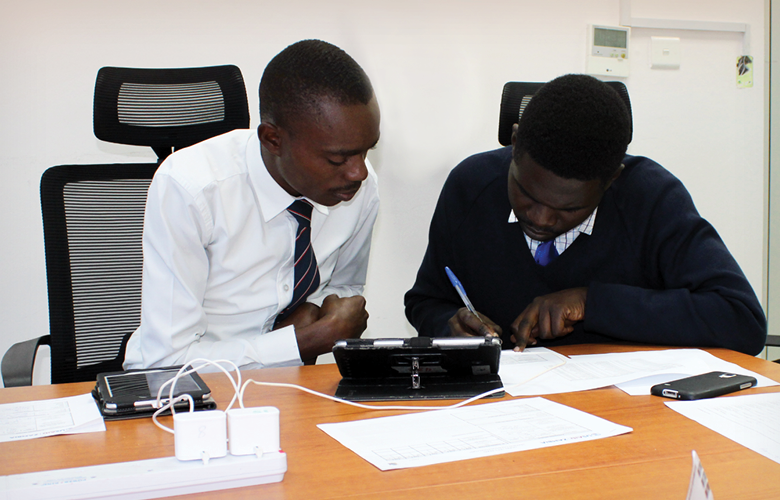
Since 2010, EDC has used its Stepping Stone app authoring platform to provide curriculum to projects in the countries we serve. Using the app, teachers and students can access content on topics such as entrepreneurship, mental health, and literacy. EDC’s partnership with the USAID Let’s Read Zambia project, which has the goal of improving literacy for 1.4 million students, uses Stepping Stone for literacy instruction.
Our app is proving to be a powerful tool to foster literacy and narrow the digital divide—a key focus of International Literacy Day 2021. However, improving reading outcomes goes beyond simply providing instruction. Teachers need to be able to identify and address gaps in learning and instruction. With this in mind, project staff requested a feature that would enable apps to upload performance data to a dashboard for analysis.
At the outset of EDC’s collaboration with USAID Let’s Read in Zambia, we saw a clear need for this feature to systematically identify gaps in student learning across thousands of schools to inform instruction. In response, we built an app that both presents engaging curriculum and helps teachers track students’ progress in primary schools where reading levels remain low.
After teachers enter class data, they upload it to our cloud-based performance tracking system (PTS), which provides score breakdowns by performance area. Then, using the PTS dashboard, they can analyze the data and identify students’ successes, as well as areas in which students need additional support (e.g., phonemic awareness, reading fluency). Drawing on the findings from their analysis, educators can swiftly refine their methods and develop new strategies that build on students’ strengths and address challenges.
In February and March of 2020, the app and the PTS were used in a pilot study, where teachers from 16 schools conducted student assessments and uploaded the scores to the PTS. Afterward, teachers reported that the app was a helpful tool, made scoring more efficient, and was easy to use. Yet we gathered that trainings focused on how to use the app will continue to be essential. We also learned that for the app and the PTS to be effective, schools will need to allot sufficient time for teachers to administer the assessment and enter the data.
In the coming months, the Let’s Read app will be on 5,000 Android tablets that are rolled out to schools, and data from over 2,500 schools is now available on the PTS. While many discussions in the first two years of the project concerned the app itself, conversations have largely shifted to making meaning out of the data that the PTS provides.
Are you using apps and data to make technology-enhanced learning more inclusive? Tell us about your work!
Nevin Katz is a senior technology associate at Education Development Center. He develops websites and mobile apps, writes about technology, and consults with projects on technology solutions. |

Comments
Add new comment